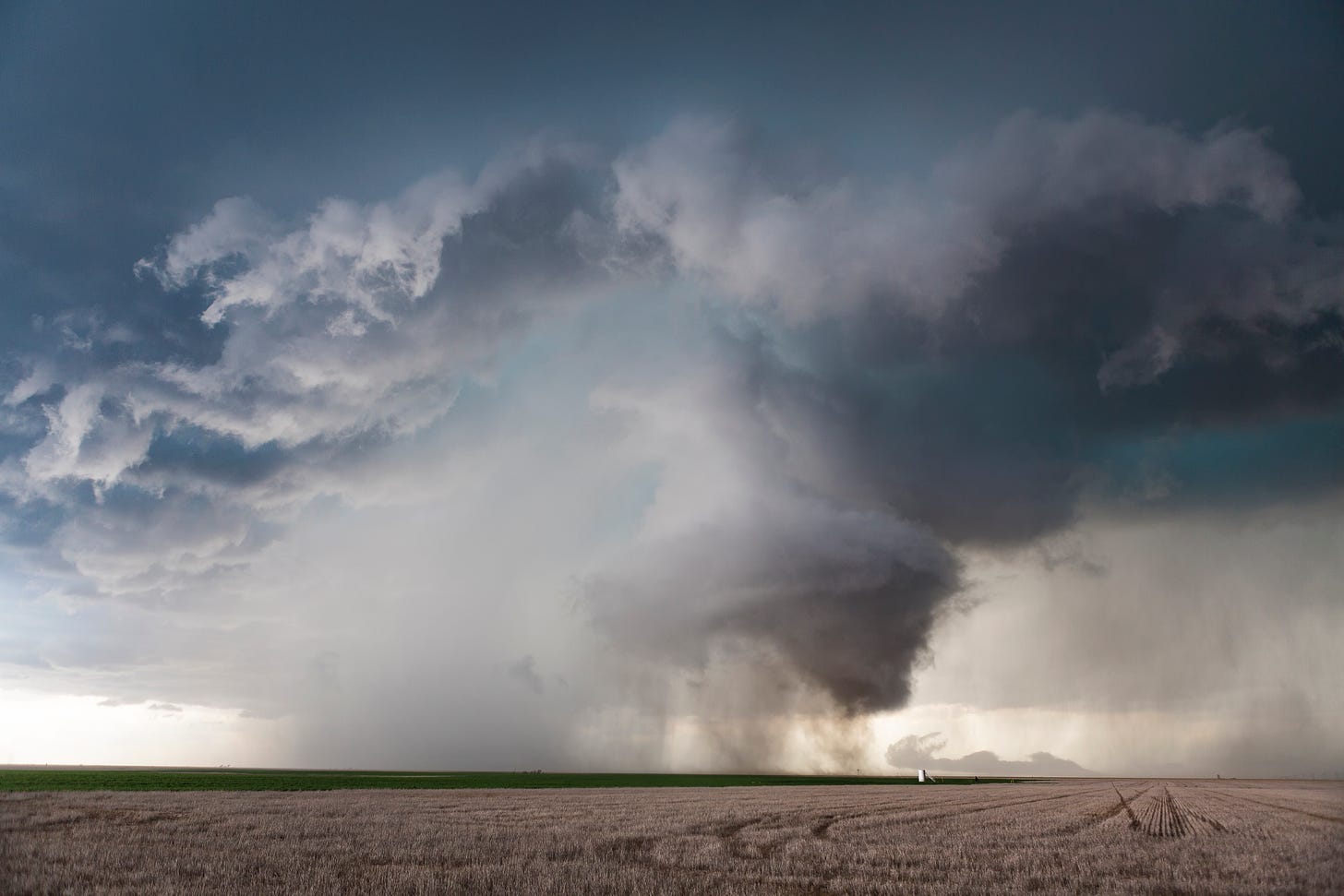America’s wild weather week
Plus, a big year for wildfires and Biden orders the government to go carbon neutral.
Welcome to Planet Days, a five-minute roundup of the latest climate news and what it means for our Planet. If this was forwarded to you, smash that subscribe button:
Last week, Nebraska became the first red state to commit to a net-zero grid, Australia faced dual disasters in wildfires and floods, and yet another study linked rich people to higher emissions.
In case you missed it, here’s what else happened around the Planet:

Monday, December 6
America’s wild weather week
The impacts of warming temperatures are hitting the United States from all angles. Over the weekend, devastating tornadoes ripped through six states, leveling entire towns and leaving at least 70 people dead. The tornadoes formed when cold air from the polar jet stream slammed into unseasonably hot air.
But it’s not just tornadoes. In Hawaii, a blizzard warning turned into catastrophic flooding. In Colorado, a snow drought has left Denver with no snowfall. And across the Plains, Washington, Montana, Wyoming, and North Dakota, saw their hottest December weather on record.
A weather pattern called La Niña is driving some of this wild weather, but it also may have the fingerprints of climate change, which makes extreme weather — perhaps even tornadoes — more frequent and severe. NPR has more.
Biden is outpacing Trump in oil and gas leases
One of Joe Biden’s first presidential actions was to ban oil and gas leases on federal lands. But things haven’t really played out that way.
A new report finds that Biden is approving more oil and gas permits faster than his predecessor. In his first year, President Biden approved an average of 333 permits per month, whereas Trump averaged 245 permits per month during that span.
But the Biden administration isn’t all to blame. In June, the courts blocked Biden’s executive order to suspend oil and gas leases on federal lands, leaving the administration’s hands tied. The Washington Post has more.
Tuesday, December 7
What’s going on with Big Oil?
A week after we wrote about Omicron crashing the oil market, oil prices rebounded. All this fluctuation hasn’t really hurt the industry, though. In the first nine months of 2021, the largest oil and gas companies made a combined $174 billion in profits, The Guardian reports.
Despite these numbers, companies are still looking elsewhere for long-term profits. For example, the state-owned Saudi Aramco last week offloaded a huge stake in the natural gas pipeline business, and Shell recently pulled out of a big North Sea oil project.
But fossil fuels still aren’t going anywhere — at least if Big Oil has a say in it. Last week, oil companies warned that too quick a transition to renewables could trigger uncontrolled inflation and social unrest, upending nations’ emissions targets.
Wildfires break emissions record
Wildfires from Siberia to the U.S. spewed a record 1.7 billion tons of carbon dioxide into the atmosphere this year, an amount equivalent to almost half of the European Union’s total annual emissions, according to a new report.
The report highlights the dual forces driving this rise in emissions: Not only do wildfires release immense amounts of stored carbon — they also burn plants key to capturing greenhouse gases. And with climate change making conditions drier and hotter, record-shattering blazes will likely continue. Read more from Reuters.
Wednesday, December 8
Oceans: The next carbon frontier
One climate solution is right in front of us. We’ve known for years that the ocean can store carbon, but how to capture heat-trapping emissions while maintaining healthy ecosystems is still a major challenge.
A new report from the Aspen Institute starts to bridge that gap. Ideas include planting more mangroves to suck carbon, fertilizing waters with iron to trigger plankton growth that feeds on CO2, and jolting the ocean with electricity to increase its ability to store CO2.
"We want to take advantage of what the ocean can offer on carbon removal, but we don't want to do it in a way that compromises ocean ecosystems or somehow makes the problem even worse," Aspen Institute’s Michael Conathan told Axios.
Biden orders the government to go carbon neutral
Biden is once again taking climate action into his own hands. On Wednesday, the president ordered the federal government to go carbon neutral by 2050.
The order puts a timetable on Biden’s earlier commitments to net zero, directing the government to purchase only clean energy by 2030, cut emissions from heating buildings in half by 2032, and buy only zero-emission vehicles by 2035.
The move comes as climate legislation remains stalled in Congress. Biden hopes these types of orders, which sidestep some legislative constraints, will help him reach emissions targets. The New York Times reports on the order.
Thursday, December 9
Tropical forests can recover on their own
Speaking of climate action, a new study finds that tropical forests could regenerate in just 20 years… if we left them alone.
“That’s good news because the implication is that, 20 years … that’s a realistic time that I can think of, and that my daughter can think of, and that the policymakers can think of,” Lourens Poorter, lead author of the paper, told The Guardian.
That’s all thanks to a natural process known as secondary succession, where old plants and animals within the forest help a new generation grow. Most importantly, the researchers stress that it’s not too late to reverse the damage done by climate change in recent decades.
Bonus
A very solar Christmas
Power your holiday with solar! Houses use an average of 10% more electricity through December than other months thanks to lights, celebrations, and entertainment (I mean, how many times can you actually watch A Christmas Story anyway?).
Reusing is always better than buying new, but if you’re in the market for new decorations this season, EcoWatch has compiled a list of solar accessories (and their pros and cons) to replace traditional, energy-consuming ones.
Have a great week,
Brandon and Sam







